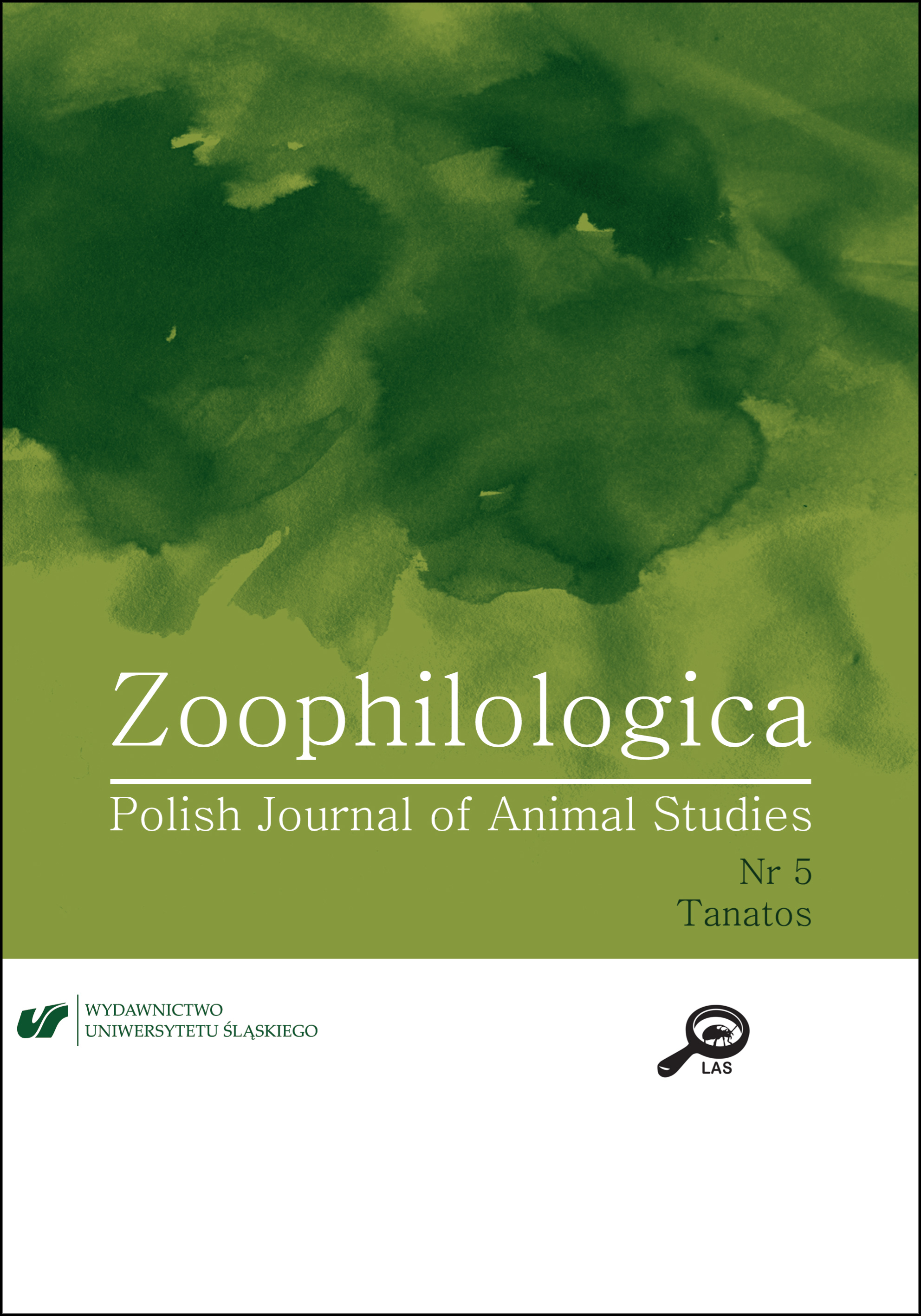„Zdychanie” czy „umieranie”? – estetyczny i etyczny wymiar śmierci we współczesnej twórczości dramaturgicznej
“Zdychanie” – animal dying, or “umieranie” – human dying? – aesthetic and ethical dimensions of death in modern dramatic art
Author(s): Monika BłaszczakSubject(s): Language and Literature Studies
Published by: Wydawnictwo Uniwersytetu Śląskiego
Keywords: animal dying; human dying; drama; aesthetics; ethics
Summary/Abstract: An extremely interesting issue in the field of literature is the question of aesthetic and ethical dimensions of animal death. Is a calm death while being asleep, in a friendly environment, with no streaming blood involved, more ethical, because it is aesthetically “nicer”? How do these two categories relate to one another when it comes to animal death? In the Polish language, the verb used to refer to an animal that stops to be alive is “zdychać” (die), whereas to a human – “umierać” (pass away). Is there a sense of community between the animal and human fate in the face of death? Attempts to find the answers to these questions may be found in modern dramas, with Pawi tren by Iwona Korszańskia as one of the most interesting ones in terms of the discussed problem. In the text written by this author, animals and humans are equalized sharing the common fate, and their death is not differentiated between “zdychanie” (dying of animals) and “umieranie” (passing away of humans), but rather equivalent and equal. In the social performances presented in the drama, the inseparable couple, Eros and Thanatos, marks the life of a human and an animal to the same degree.
Journal: ZOOPHILOLOGICA. Polish Journal of Animal Studies
- Issue Year: 2019
- Issue No: 5
- Page Range: 237-252
- Page Count: 16
- Language: Polish

